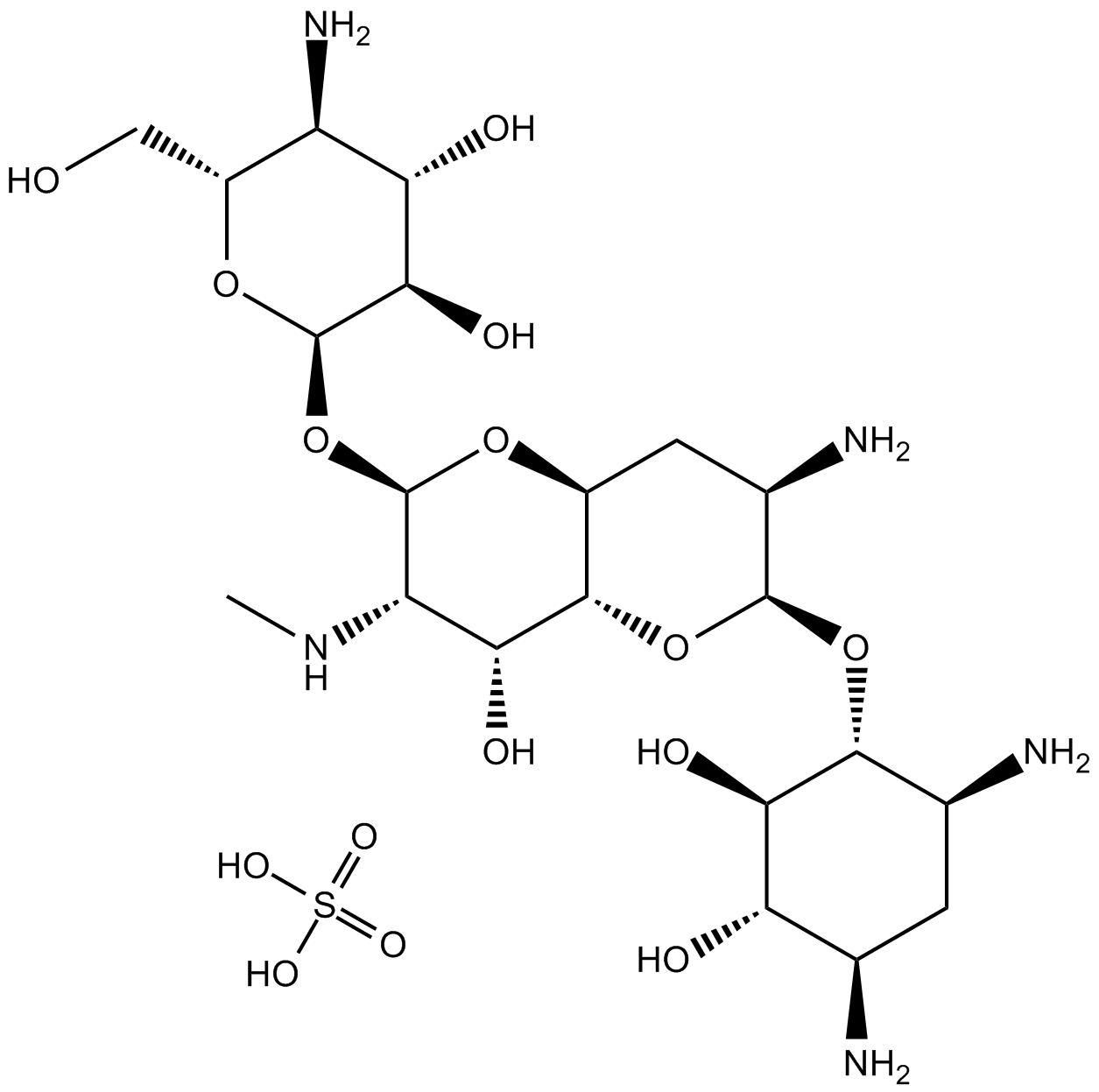Apramycin Sulfate |
| رقم الكتالوجGC12855 |
كبريتات Apramycin هو مضاد حيوي من aminoglycoside m يتم إنتاجه بواسطة سلالة من Streptomyces tenebrarius ، المستخدمة في الممارسة البيطرية
Products are for research use only. Not for human use. We do not sell to patients.

Cas No.: 65710-07-8
Sample solution is provided at 25 µL, 10mM.
Apramycin sulfate is an aminoglycoside antibiotic mproduced by a strain of Streptomyces tenebrarius, used in veterinary practice.
References:
[1]. O'Connor S, et al. Apramycin, a unique aminocyclitol antibiotic. J Org Chem. 1976 Jun 11;41(12):2087-92.
[2]. Hunter JE, et al. Apramycin resistance plasmids in Escherichia coli: possible transfer to Salmonella typhimurium in calves. Epidemiol Infect. 1992 Apr;108(2):271-8.
[3]. Paget E, et al. Apramycin resistance as a selective marker for gene transfer in mycobacteria. J Bacteriol. 1996 Nov;178(21):6357-60
Average Rating: 5 (Based on Reviews and 39 reference(s) in Google Scholar.)
GLPBIO products are for RESEARCH USE ONLY. Please make sure your review or question is research based.
Required fields are marked with *




















